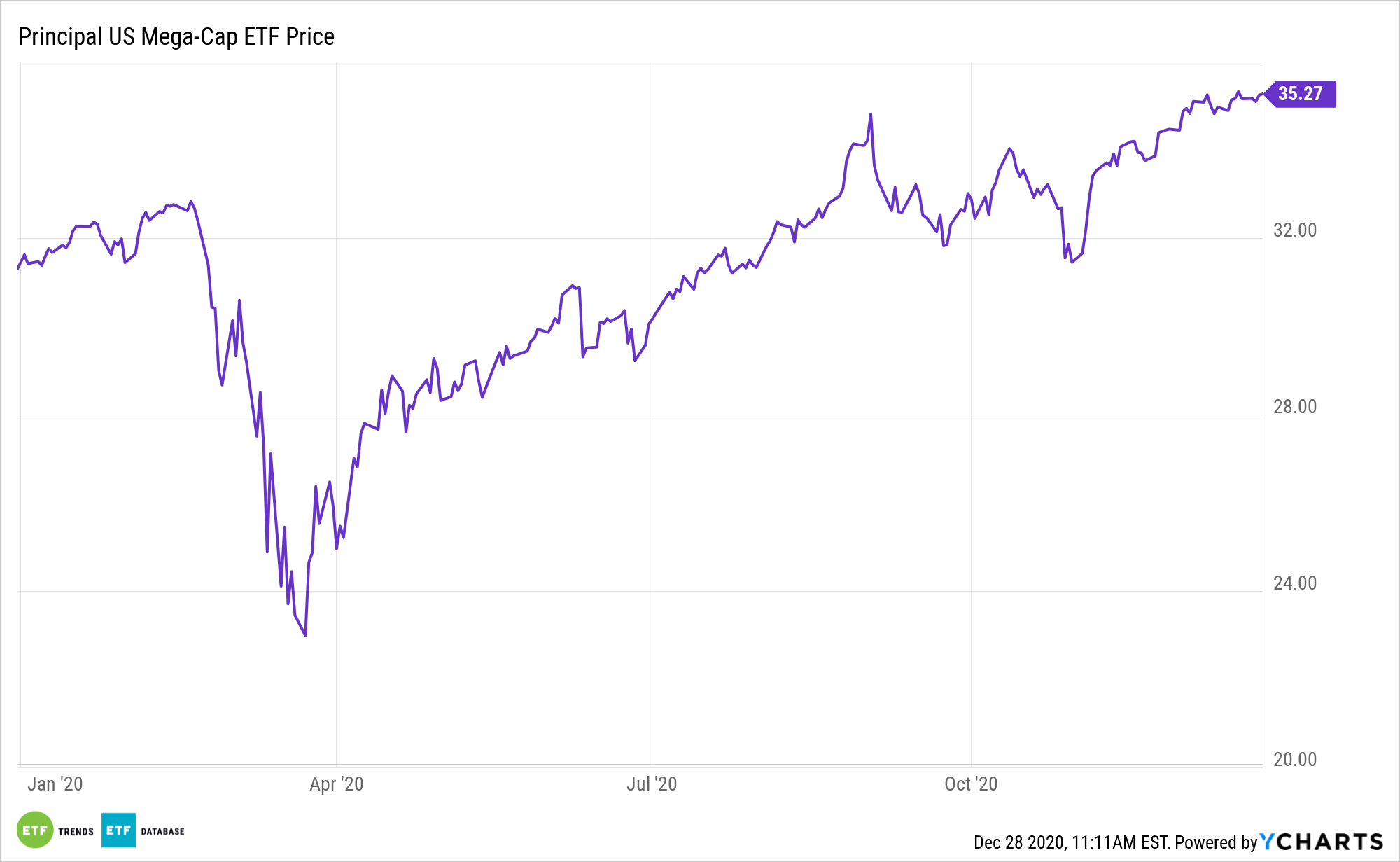While 2020 was a trying year for some investment factors, others were mediocre, and even more flourished, a scenario underscoring the utility of multi-factor strategies such as the Principal U.S. Mega-Cap Multi-Factor Index ETF (NasdaqGM: USMC).
USMC, which tries to reflect the performance of the Nasdaq US Mega Cap Select Leaders Index, is comprised of companies with the largest market capitalization taken from the Nasdaq U.S. 500 Large Cap Index and screened based on a quantitative model. The fund implements a multi-factor indexing methodology during its selection process.
The fund offers a straight-forward approach relevant to some of its peers. This distinction proves all the more important as the universe of multi-factor ETFs expands.
“Put several different factors together in a portfolio, and those doing well would outweigh any doing badly, and lead over time to performance that steadily and predictably beat the index,” writes John Authers for Bloomberg.
Go Under the Hood of the USMC ETF
Compared to the S&P 500 Index, USMC’s underlying index exhibits a higher overweight to the size and low-volatility factor, along with a smaller tilt toward momentum and quality. The Nasdaq U.S. 500 Large Cap Index also includes a heavier overweight to consumer staples, healthcare, and communication services with underweight to industrials, financials, real estate, consumer discretionary, and materials.
“There is the strong financial rationale of investing in the cheaper (value) and less risky stocks (low risk) that are outperforming (momentum) and that have the strongest fundamentals when it comes to profitability and quality of management (quality),” according to BNP Paribas research.

Individual factors produced uneven returns during different periods or exhibited more cyclical returns. For example, quality and momentum may have outperformed in 2017, but the two factors were also the worst performers in 2016. Investors may want a multi-factor approach as opposed to trying to time single factors. Investors, though, can still tactically over- or under-weight single factors to express a market view over the short-term.
Historically, quality and low-volatility factors have performed well.
USMC potentially provide investors a systematic tilt toward lower historical volatility as a way to offer more stability and better downside protection, along with a highly focused, yet risk-aware, exposure to mega-cap phenomena in an attempt to help investors generate better risk-adjusted returns over the long haul.
For more on multi-factor strategies, visit our Multi-Factor Channel.
The opinions and forecasts expressed herein are solely those of Tom Lydon, and may not actually come to pass. Information on this site should not be used or construed as an offer to sell, a solicitation of an offer to buy, or a recommendation for any product.

